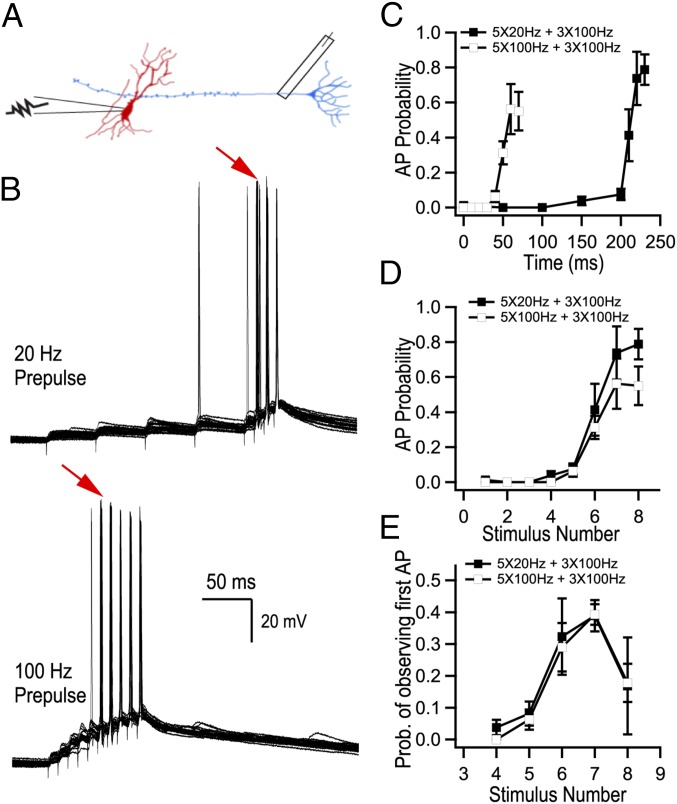Fig. 1.
Transmission of information to CA3 pyramidal cells depends on the number of APs in bursts. (A) Cartoon based on an original drawing of Ramón y Cajal showing the recording configuration for experiments performed in Fig. 1 (replicated from ref. 41). Whole-cell recordings were obtained from CA3 pyramidal neurons and MF axons were electrically stimulated. (B) Representative current-clamp recordings from a CA3 pyramidal cell. The red arrows point to the sixth stimulus in the trains where postsynaptic AP probability increased sharply. (C and D) CA3 pyramidal cell firing probability as a function of time (C) and of the number of APs (D) during two stimulation paradigms. (E) Probability of observing the first AP. Both AP probability and the probability of observing the first AP are mainly determined by the number of preceding APs but not by the average burst frequency (B–E, n = 5 cells).

